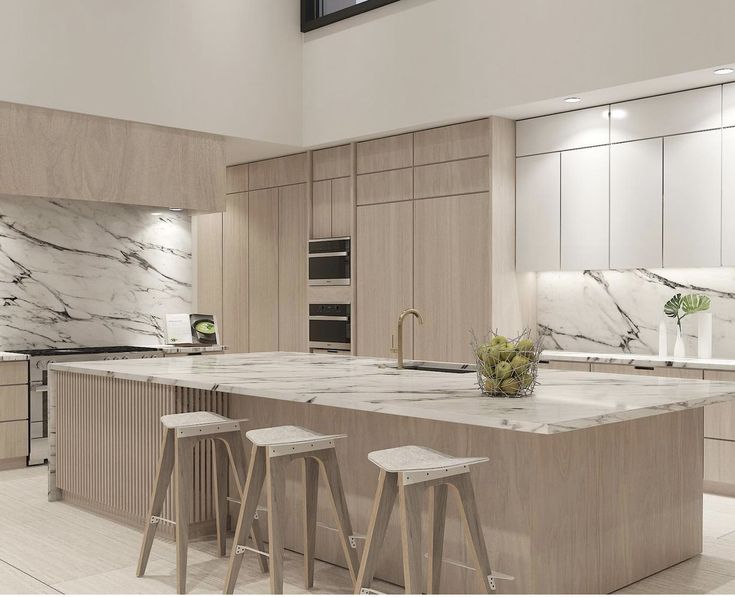Introduction
Before diving into the aesthetic side of kitchen design, let’s clear our minds of any preconceived, Pinterest-perfect images. Kitchens that look immaculate in photos may require more upkeep than we think. In India, where we often cook multiple times a day, keeping a kitchen spotless can be challenging. This guide will help you design a functional and stylish kitchen that fits both your needs and lifestyle.
Step 1: Understand Your Wants vs. Needs
Start by thinking about the core requirements of your kitchen. It’s not just about what you want; it’s about what will make your life easier. Ask yourself and your family:
- How committed are we to daily cleaning?
- What appliances are essential, and which ones are optional?
- Will the kitchen accommodate one or more people working at once?
- How much storage do we need? Do you prefer drawers or shutters?
Clarifying these questions will help you focus on a kitchen design that truly works for your day-to-day.
Step 2: Choose the Right Layout
Different kitchens need different layouts. Here are some popular options to consider based on the size and structure of your kitchen:
- Single Wall Kitchen
Ideal for small spaces or studio apartments, this layout keeps everything along one wall. Although it may not allow a traditional “work triangle,” arranging the stove, refrigerator, and sink in equal sections along the wall can create an efficient flow. - L-Shaped Kitchen
The most common choice, this layout provides ample workspace and allows multiple people to work simultaneously. The “work triangle” is maintained here, making it an ideal setup for mid-sized kitchens. - Parallel or Galley Kitchen
A practical layout, especially if two people often use the kitchen together. This setup creates separate zones for different activities and is suitable for nuclear families. - U-Shaped Kitchen
For those needing maximum storage, this layout offers three base cabinet sets and wall cabinets, making it ideal for joint families. - Island Kitchen
Perfect for large kitchens, an island adds both a workspace and a dining area. It requires enough space around it for movement and works well as a preparation zone or breakfast counter.
Step 3: Consider Wet and Dry Kitchens
For larger homes, dividing the kitchen into wet and dry areas can be very practical. The wet kitchen handles cooking and dishwashing, while the dry kitchen is for lighter tasks like prep work and storing cooked food. It’s especially useful if you have a helper or cater to larger gatherings, as it keeps the main kitchen area tidy.
Step 4: Choosing Materials for Countertops and Cabinets
Your choice of materials affects not only the look but also the durability of your kitchen. Here are some popular options:
- Granite
Durable and suitable for Indian kitchens, granite is a natural stone available mostly in darker shades. - Quartz
An artificial material with various colors and textures, including lighter shades, quartz is a versatile option. - Nano White
Known for its smooth, glossy finish, Nano White is perfect for a lighter countertop. - Full Body Tiles
A more economical option that comes in various colors and textures, these tiles are cost-effective and easy to maintain.
Step 5: Wall and Cabinet Finishes
Avoid tiles with small textures that are hard to clean. Instead, go for large, glossy tiles or slabs that minimize grout lines. For cabinets, BWP (Boiling Water Proof) grade ply or HDHMR is a solid choice for durability. Laminate is economical, while acrylic gives a premium look, and glass offers an ultra-premium feel.
Step 6: Focus on Lighting and Electrical Planning
A well-lit kitchen is essential. To calculate your lighting needs, use this rule of thumb: 60 lumens per square foot. For a kitchen that’s about 80 sq. ft., aim for 4,800 lumens. Choose 4K or 6K LED panels for area lighting, and add profile lights under cabinets to illuminate workspaces. Task lighting on the countertops can help prevent shadows while cooking.
Step 7: Select the Right Appliances
Choosing appliances depends on both space and budget. When deciding on features, consider your cooking habits and family’s needs. Built-in hobs are a space-saving choice, while standalone cooktops may be more flexible for smaller kitchens.
Final Tips
Your kitchen should reflect your personal needs and style, but it also needs to be practical. Remember to balance aesthetics with functionality to create a kitchen space you’ll enjoy using every day. Whether you choose a dark or light countertop, plan your design to suit your lifestyle.

